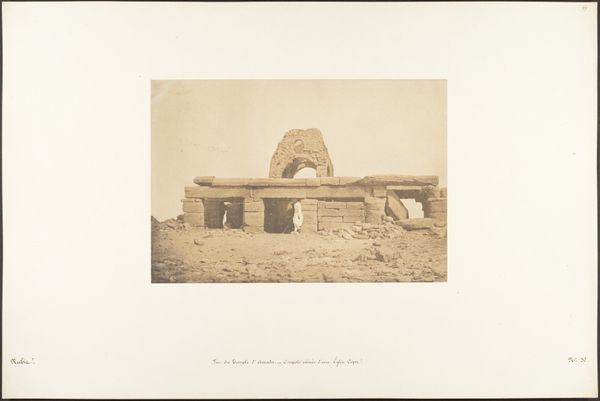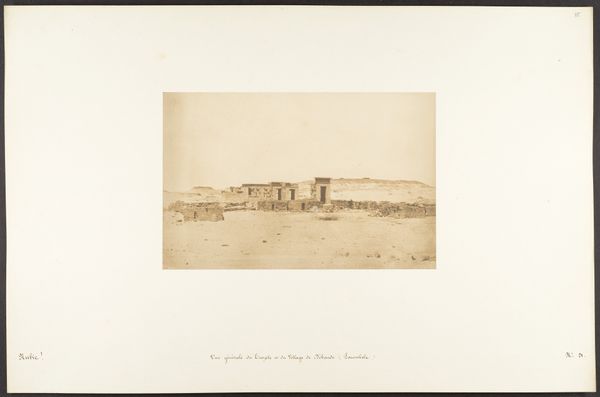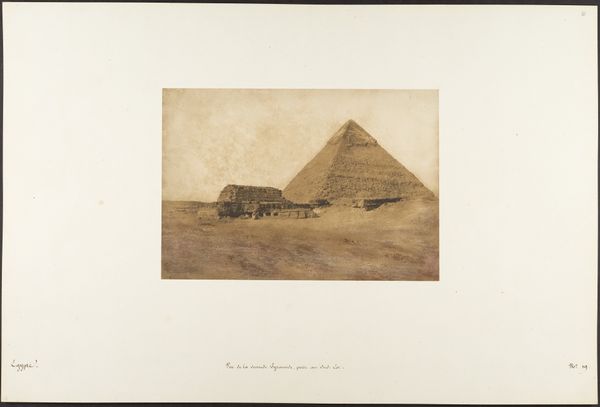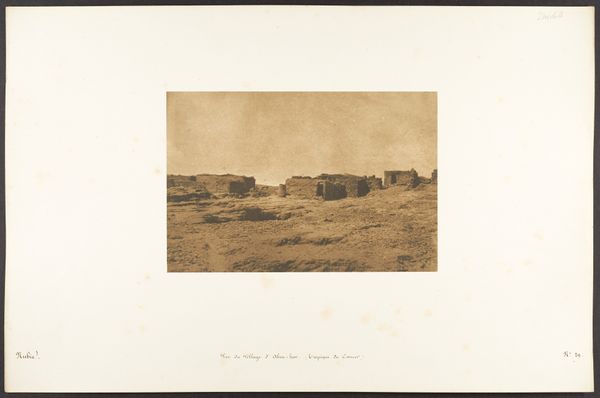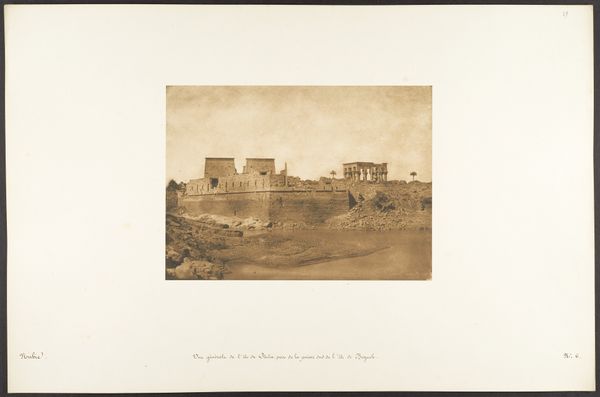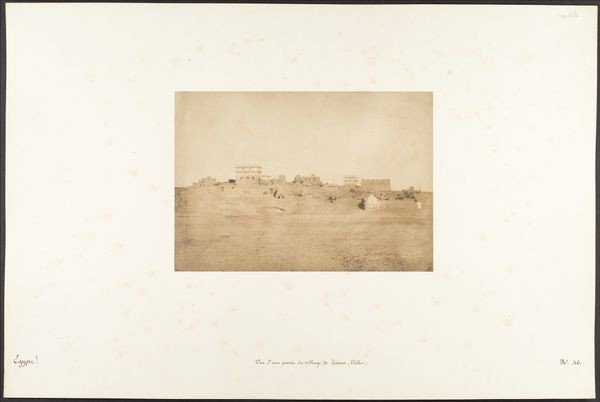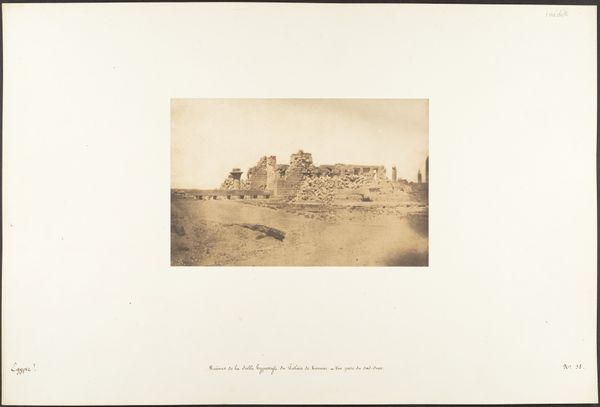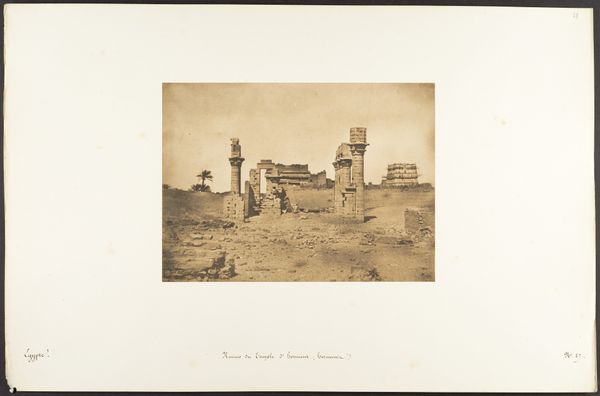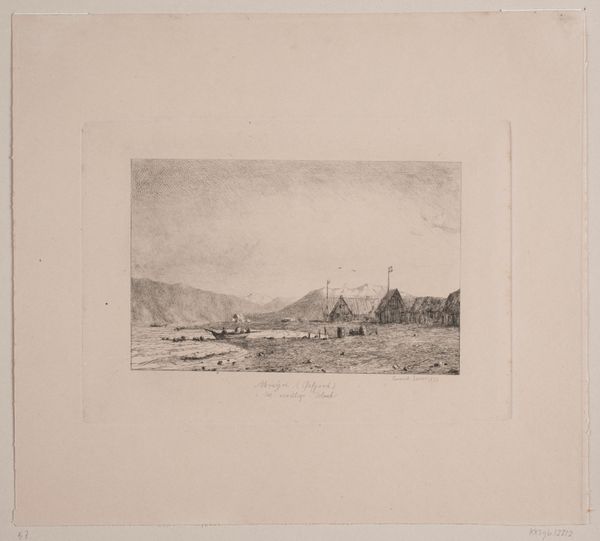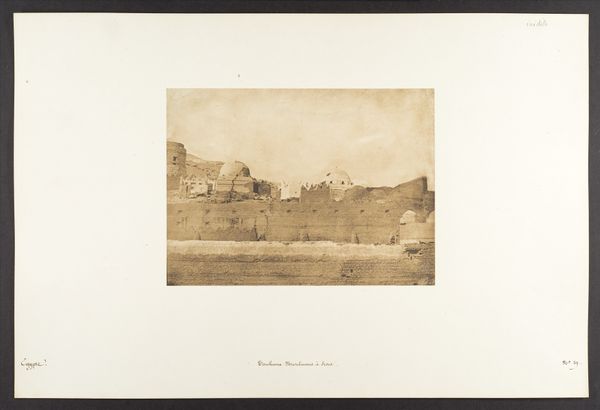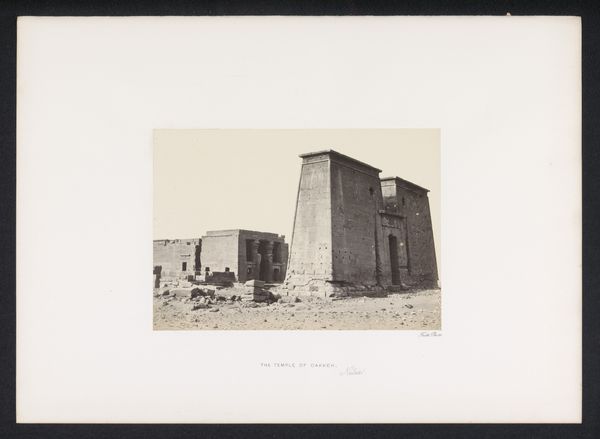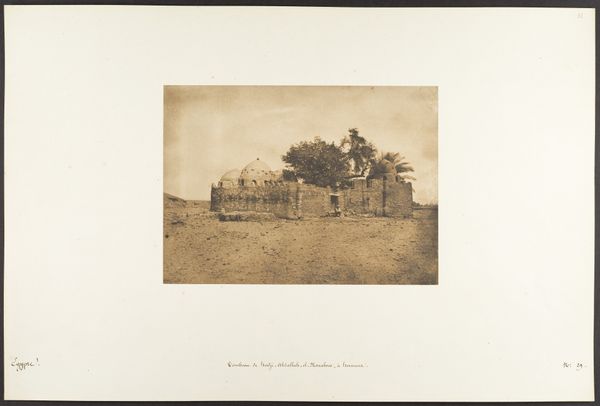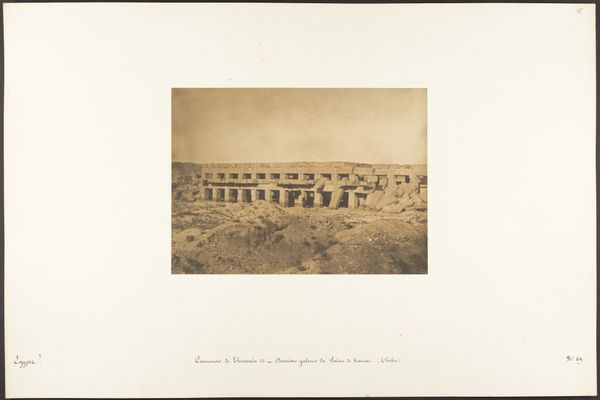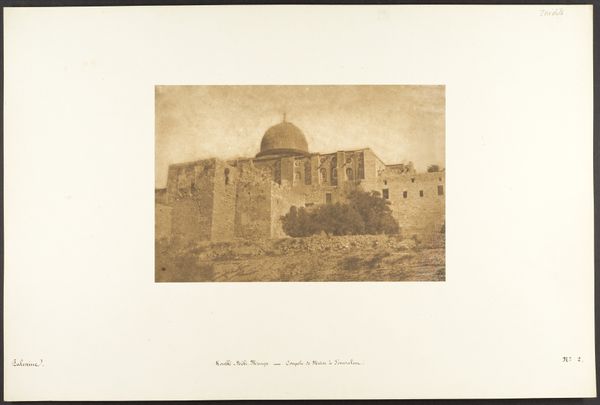
photography, architecture
#
landscape
#
photography
#
orientalism
#
architecture
Dimensions: Mount: Approximately 32 x 47 cm (12 5/8 x 18 1/2 in.)
Copyright: Public Domain
Curator: Before us is Maxime Du Camp’s photograph, "Tombeaux Musulmans à Herment," dating from 1849 to 1850. Editor: The sepia tones lend a timeless, almost dreamlike quality. The composition emphasizes the geometric solidity of the tombs against the vastness of what seems to be a stark desert landscape. Curator: Du Camp, influenced by the Orientalist movement, captures not just the physical structure of these tombs, but also their cultural and spiritual significance within their setting. Tombs, particularly, evoke powerful emotions; culturally, they represent not only the passage of life but also lasting influence. Editor: Notice how the texture plays across the image. The grainy quality of early photography lends a kind of tactility, almost as if you could reach out and feel the rough surfaces of the structures. Curator: Yes, the materiality speaks volumes. Consider the dome shape—an architectural choice rich in symbolism across many cultures, often representing the cosmos or heaven. It speaks to aspirations and beliefs about the afterlife in the Islamic faith. Editor: And the framing! The horizontality of the landscape contrasting with the vertical thrust of the tombs...there's a visual language at play about our earthly existence versus our eternal selves. Curator: I see Du Camp subtly directing our gaze with light and shadow, focusing on forms but simultaneously revealing a world ripe with stories beyond the photographic frame. It offers insight into nineteenth-century colonial interests and documentation. Editor: A thought-provoking picture that asks us to meditate on death, faith, and the impact we leave on this world and the structures we create. Curator: Precisely, this image reminds us that architecture transcends mere construction. It's laden with cultural meaning that continue to echo throughout generations.
Comments
No comments
Be the first to comment and join the conversation on the ultimate creative platform.
